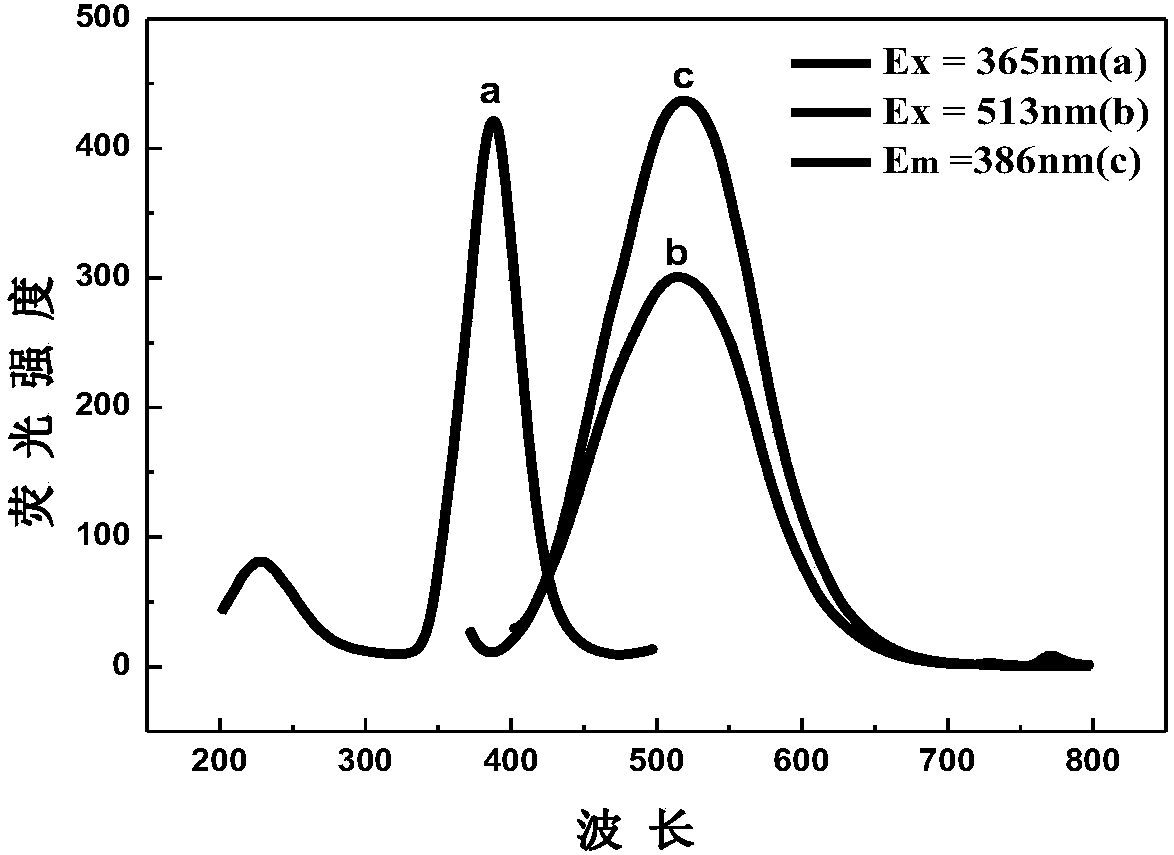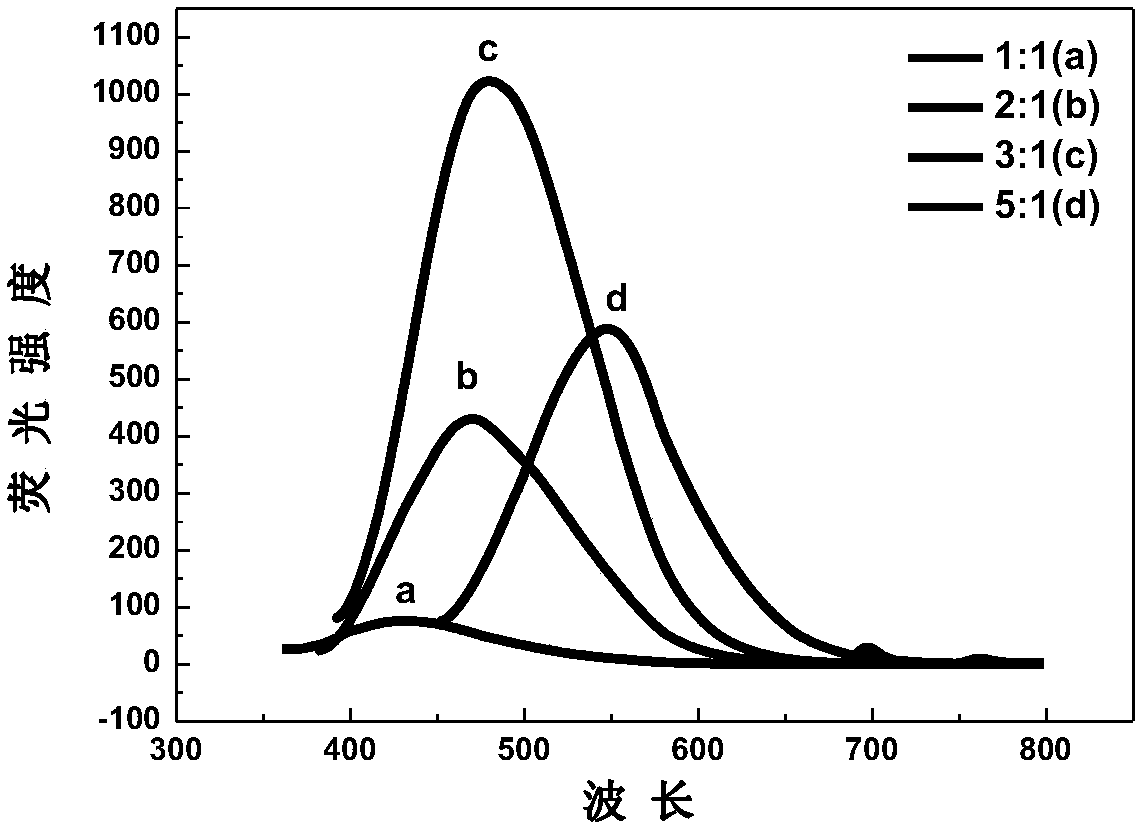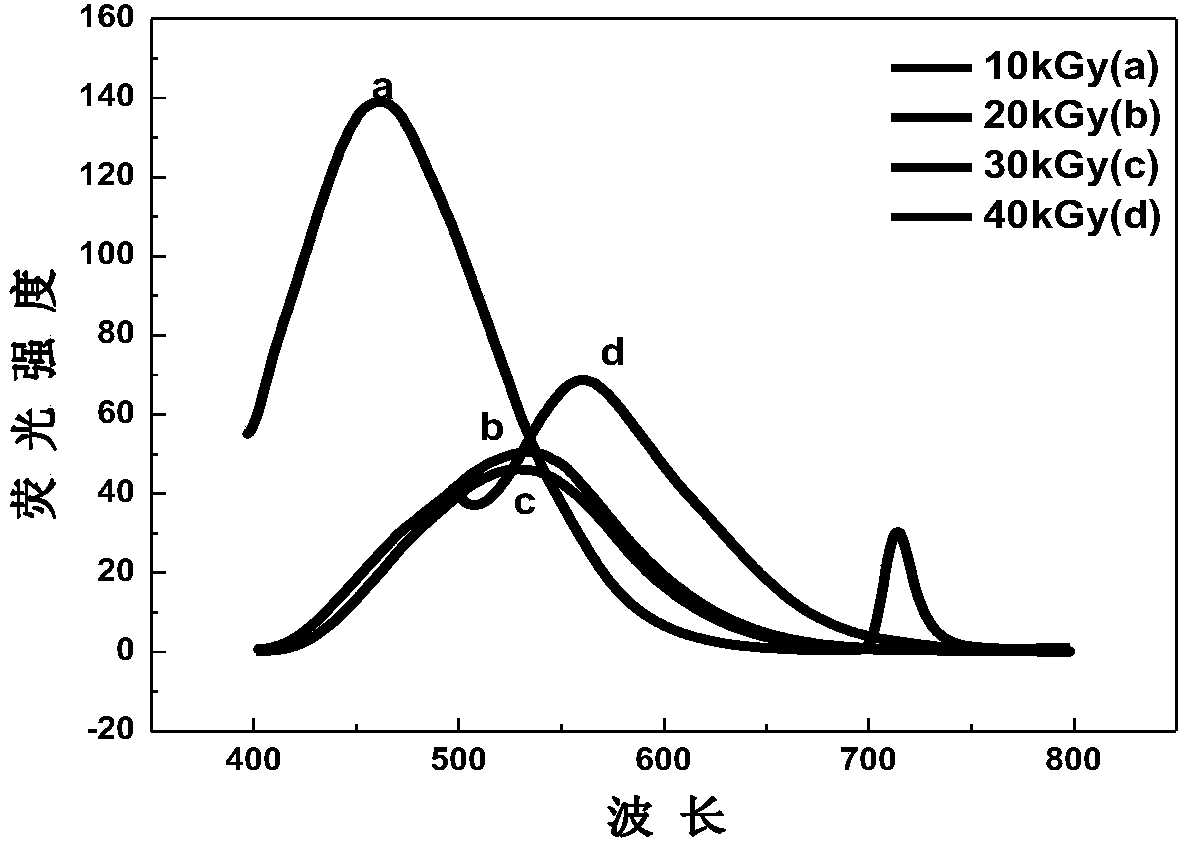A method for in-situ controllable radiation synthesis of water-soluble CDS quantum dots with different emission wavelengths
A technology of emission wavelength and synthesis method, applied in chemical instruments and methods, luminescent materials, nanotechnology for materials and surface science, etc. diameter, dispersion and stability
- Summary
- Abstract
- Description
- Claims
- Application Information
AI Technical Summary
Problems solved by technology
Method used
Image
Examples
Embodiment 1
[0028] First, weigh 0.05-0.2 mol of CdCl with an analytical balance 2 Dissolve in 100mL deionized water, add MPA solution dropwise and stir, MPA and CdCl 2 The molar ratio of the solution is 5:1. After stirring evenly, adjust the pH to 10 with 1M NaOH solution. During this process, the solution turns from clear to cloudy. Continue to add NaOH solution dropwise to become clear and transparent again. Add 3mL of isopropanol IPA as a scavenger for oxidative groups generated during the irradiation process; transfer this solution to a PE plastic bag, seal it, and irradiate; the operating voltage of the electron accelerator is 1000KeV, and the electron beam current is 20mA , the electron beam energy is 1MeV, the running speed of the irradiation car is 7m / s, the irradiation dose rate is 50kGy / pass, and the total irradiation dose is 50kGy. After irradiation, a light yellow CdS quantum dot solution is obtained. The fluorescence spectrometer measures its The emission wavelength is locat...
Embodiment 2
[0030] First, weigh 0.05-0.2 mol of CdCl with an analytical balance 2 Dissolve in 100mL deionized water, add MPA solution dropwise and stir, MPA and CdCl 2The molar ratio of the solution is 8:1. After stirring evenly, adjust the pH to 12 with 1M NaOH solution. During this process, the solution turns from clear to cloudy. Continue to add NaOH solution dropwise until it becomes clear and transparent again. Add 5 mL of isopropanol IPA as a scavenger for oxidative groups generated during the irradiation process; transfer this solution to a PE plastic bag, seal it, and irradiate; the operating voltage of the electron accelerator is 1000KeV, and the electron beam current is 20mA , the energy of the electron beam is 1MeV, the running speed of the irradiation car is 7m / s, the irradiation dose rate is 30kGy / pass, and the total irradiation dose is 30kGy. After irradiation, a light yellow CdS quantum dot solution is obtained. The emission wavelength is located at 540nm under the excitat...
Embodiment 3
[0032] First, weigh 0.05-0.2 mol of CdCl with an analytical balance 2 Dissolve in 100mL deionized water, add MPA solution dropwise and stir, MPA and CdCl 2 The molar ratio of the solution is 3:1. After stirring evenly, adjust the pH to 9.0 with 1M NaOH solution. During this process, the solution turns from clear to cloudy. Continue to add NaOH solution dropwise until it becomes clear and transparent again. Finally, add it to the above mixed solution Add 10mL of isopropanol IPA as a scavenger for oxidative groups generated during the irradiation process; transfer this solution to a PE plastic bag, seal it, and irradiate; the operating voltage of the electron accelerator is 1000KeV, and the electron beam current is 20mA , the electron beam energy is 1MeV, the running speed of the irradiation car is 7m / s, the irradiation dose rate is 10kGy / pass, and the total irradiation dose is 20kGy. After irradiation, a colorless CdS quantum dot solution is obtained. The fluorescence spectrome...
PUM
| Property | Measurement | Unit |
|---|---|---|
| emission peak | aaaaa | aaaaa |
Abstract
Description
Claims
Application Information
 Login to View More
Login to View More - R&D
- Intellectual Property
- Life Sciences
- Materials
- Tech Scout
- Unparalleled Data Quality
- Higher Quality Content
- 60% Fewer Hallucinations
Browse by: Latest US Patents, China's latest patents, Technical Efficacy Thesaurus, Application Domain, Technology Topic, Popular Technical Reports.
© 2025 PatSnap. All rights reserved.Legal|Privacy policy|Modern Slavery Act Transparency Statement|Sitemap|About US| Contact US: help@patsnap.com



